Multiplicity vs Event ID - Run00109337

Multiplicity vs event ID - Run00109338
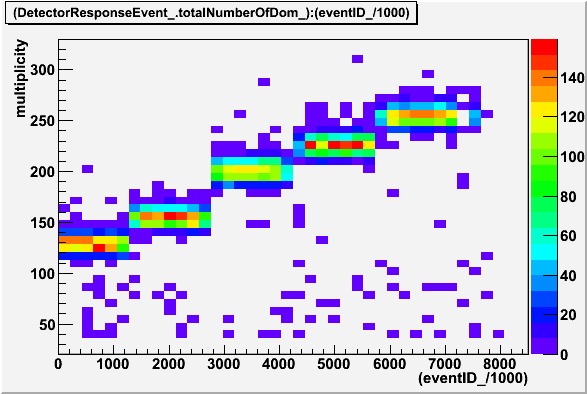
(NPE/500) vs event ID - Run00109337
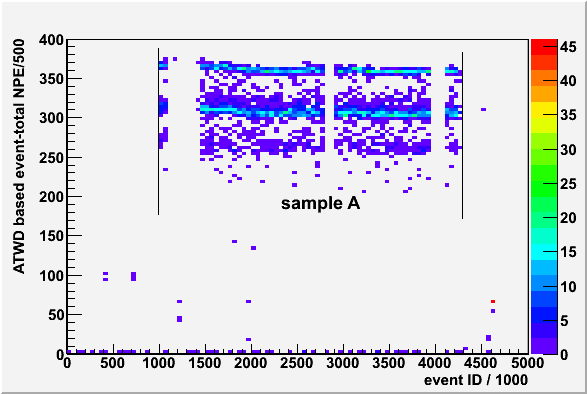
(NPE/500) vs event ID - Run00109338
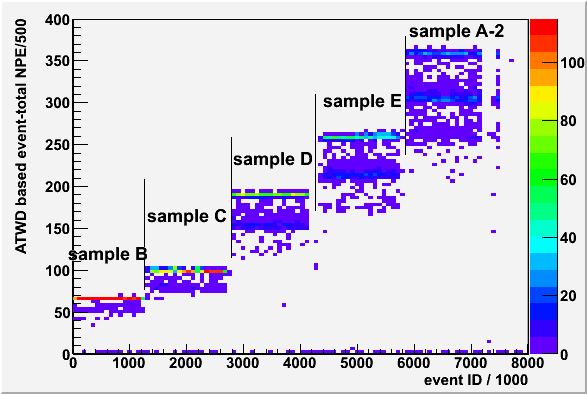
This page studies details of the standard candle runs taken with pDAQ in October 2007, Run00109337(Run37) and Run00109338(Run38). Run37 is taken with the standard candle with maximum intensity and a small number of minimum intensity. Run00109338 includes almost equal number of 5 intensity settings. Following a brief look at these 'general feature', I'll at first focus only on the maximum intensity events from Run00109337 and look into the waveforms.
|
Multiplicity vs Event ID - Run00109337 
|
Multiplicity vs event ID - Run00109338 
|
|
(NPE/500) vs event ID - Run00109337 
|
(NPE/500) vs event ID - Run00109338 
|
In above upper plots, one can see there is some low multiplicity events in the sample which are unlikely belong to SC sample, which gives very small NPE in the lower plots.
I defined 7 sets of samples based on eventIDs and minimum number of muliplicity requested.
Also for all the intensities, the LE time of string-40 dom-22 (the closest to the SC) to be the earliest of LEs of all DOM is requested to be standard candle events.
| Sample Name | Event ID range | multiplicity range | Run ID | Number of events after this cut |
|---|---|---|---|---|
| Sample A | between 1011000 and 4258000 | between 220 and 400 | Run37 | 4080 |
| Sample B | between 6000 and 1240000 | between 110 and 400 | Run38 | 1837 |
| Sample C | between 1349000 and 2685000 | between 130 and 400 | Run38 | 1983 |
| Sample D | between 2800000 and 4136000 | between 175 and 400 | Run38 | 1980 |
| Sample E | between 4386000 and 5723000 | between 200 and 400 | Run38 | 1983 |
| Sample A-2 | between 5860000 and 7505000 | between 220 and 400 | Run38 | 2092 |
|
event total ATWD based NPE distribution 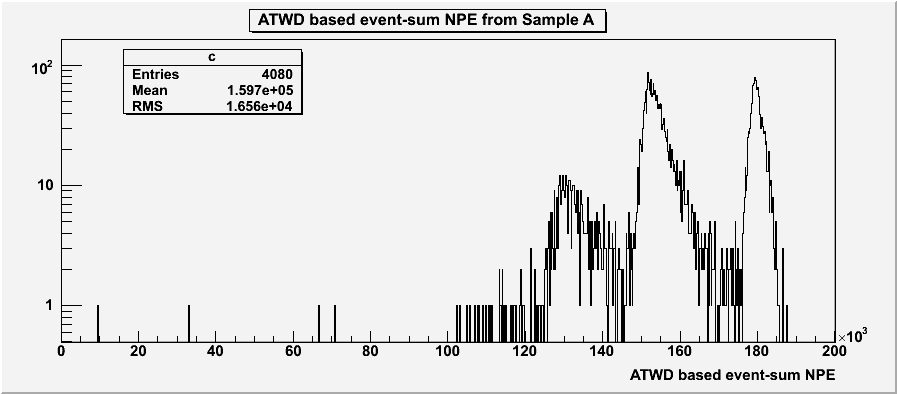
|
|
event total ATWD based NPE distribution 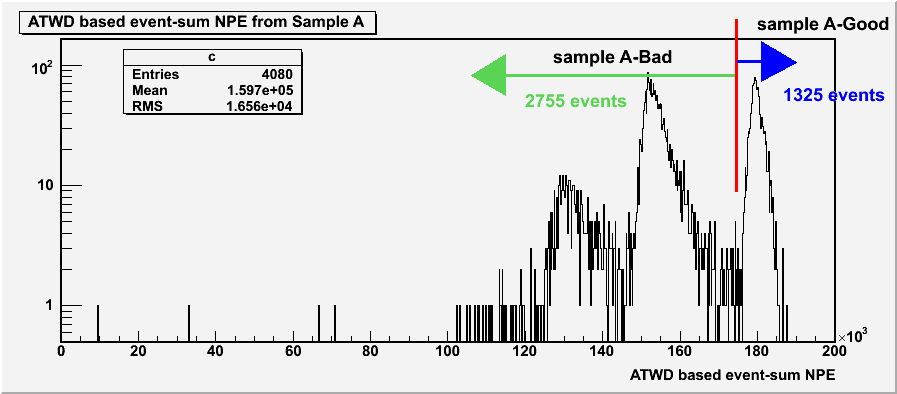
|
To investigate why there is NPE structures, channel-wise ATWD NPE vs DOM Number for string 40 which are the largest contribution to the NPE event-sum are ploted for all sample A and only sample A-Good. It can be seen that the large tails in the NPE distribution of each DOMs are removed by this cut (though not perfect).
|
All Sample A events 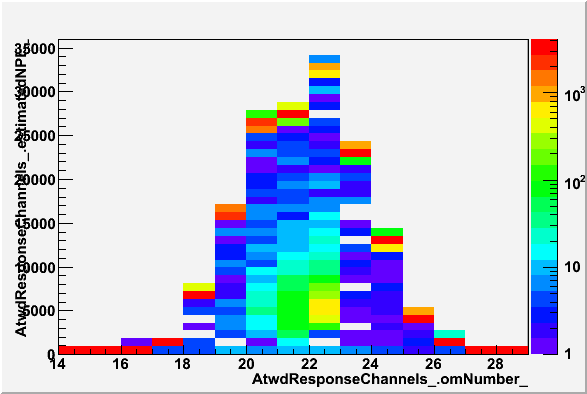
|
All Sample A events 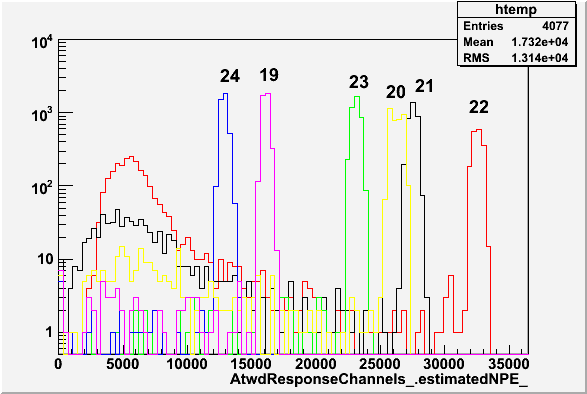
|
|
Sample A-Good only 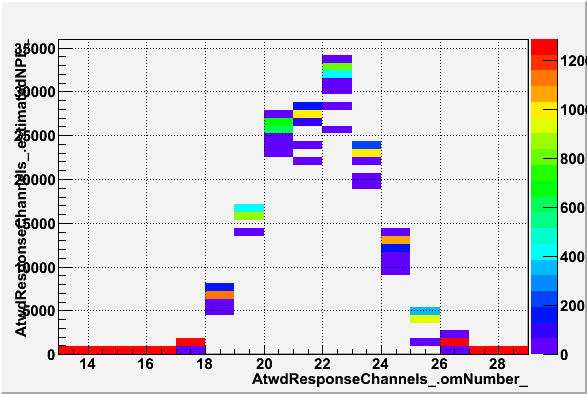
|
Sample A-Good only, colors are the same as above 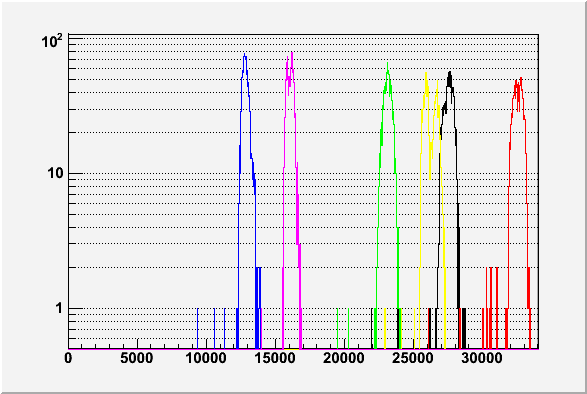
|
For one more example of the other event-wise ditribution, the center of brightness for Sample A-Good and sample A-Bad are plotted.
|
sample A-Good COB, from left to the right, x, y and z 
|
|
sample A-Bad COB, from left to the right, x, y and z 
|
Finally the waveform itself is checked. Waveform is not averaged over, insteed just superinposed 1000s of waveforms in each plots.
waveforms are aligned according to the LE time of the closest DOM by defining the time-axis (x axis) is the actual time minus the time that the closest DOM S40-D22 exceeded 1V.
Please visit Waveforms from Sample A-Good (High-NPE Set) (left) and other (right) to compare waveforms of good and bad samples especially for the DOMs close to the standard-candle (between d22 and d23).
There, it is clear that many events capture (dom launch) starts too early by pre-pulses.
To distinguish these appropriately triggered with SC induced pulses from all the waveforms, the clearest variable would be width of the waveform.
Here, I studied both
1) TOT at 1V and
2) Pulse-width defined by the interval between the times of 10 % of full waveform is captured and 80 % of waveform is captured.
|
Sample A-Good TOT distributions as function of DOM number 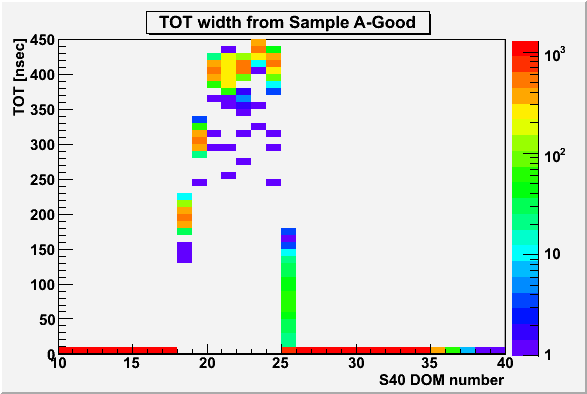
|
Sample A-Bad TOT distributions (TOT at 1V) as function of DOM number 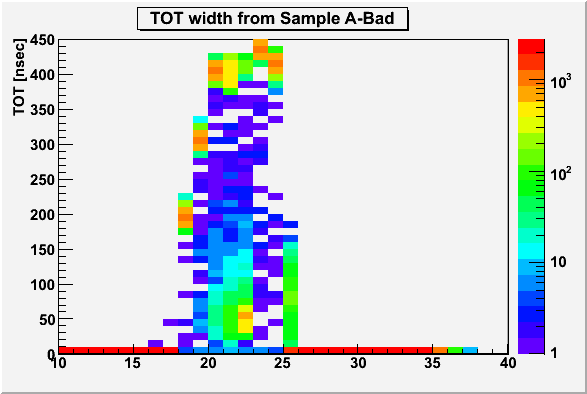
|
|
Sample A-Good pulse width as function of DOM number for string 40 only 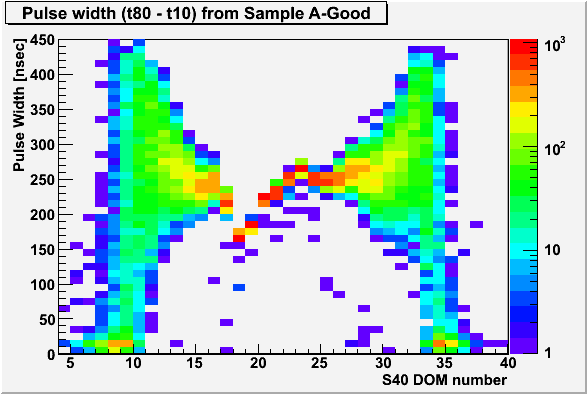
|
Sample A-Bad pulse width as function of DOM number for string 40 only 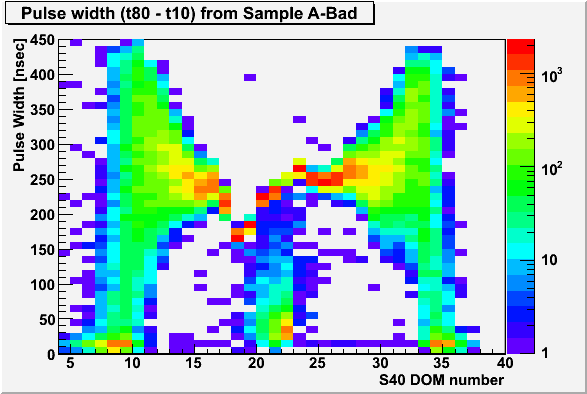
|
|
Sample A-Good: 1D histogram of pulse width for several the close DOMs (s40-d21,22,23 and 18) 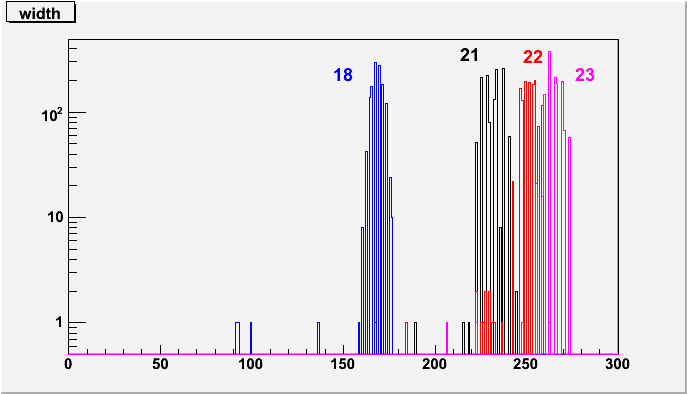
|
Sample A-Bad: 1D histogram of pulse width for several the close DOMs (s40-d21,22,23 and 18) 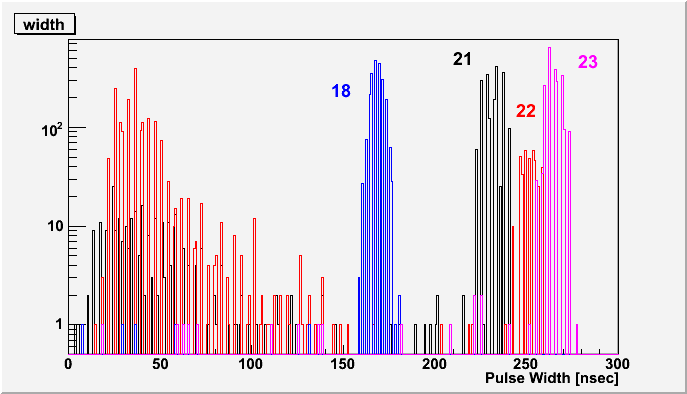
|
Filtering of noise induced events, based on pulse width - As TOT is difficult to define with these pre-pulses (if the TOT thres is defined high, the TOT value for far doms is not applicable), I used the (t80-t10) pulse-widths.
Event is rejected if the width of the one or more near-SC DOMs (S40 D12 ~ D32) are too short.
Please check the waveform of all the sample A event BEFORE the filtering at
* Waveforms from all events in sample A from ATWD (left) and FADC (right)
to compare waveforms of samples AFTER the filtering process at
* Waveforms from Sample-A after pulse-width filtering from ATWD (left) and FADC (right)
1250 events passed this cut out of 4080 events.
|
Sample A: S40 DOM22 DOM Launch time relative to the time of the closest DOM recieve main pulse 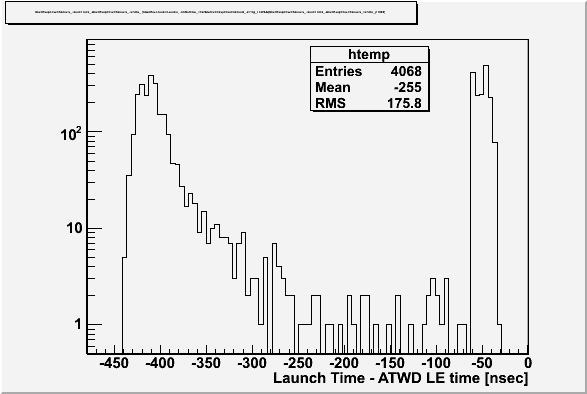
|
|
ATWD based channel-wise NPE 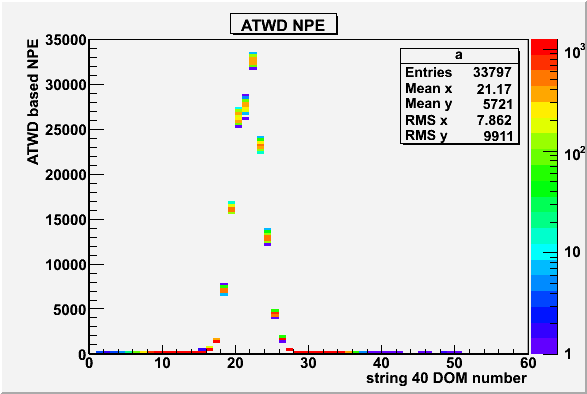 |
FADC based channel-wise NPE 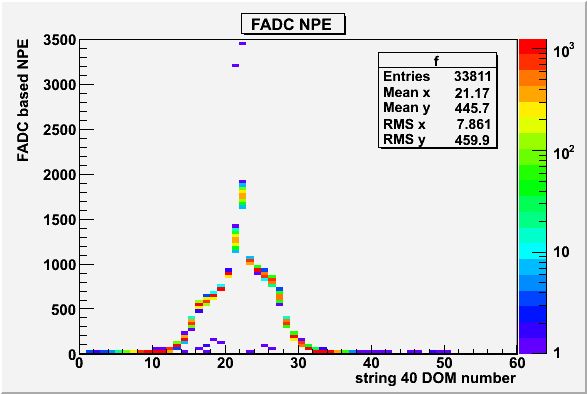 Note the 3 high NPE doms are waveforms from late pulses seen here.
Note the 3 high NPE doms are waveforms from late pulses seen here.
|
|
ATWD based event-sum NPE  |
FADC based event-sum NPE 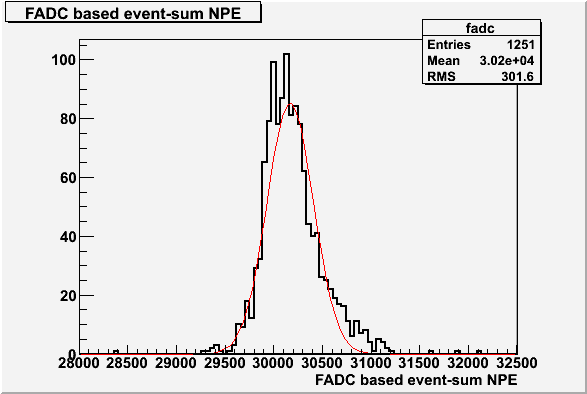 |
send your comments to: aya at hepburn.s.chiba-u.ac.jp